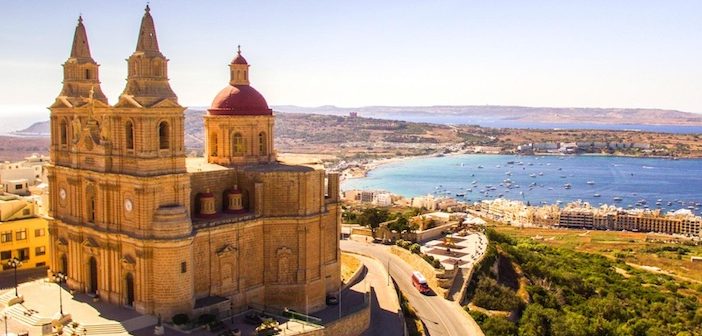With stormy weather and general grey permeating the UK this time of year, a last-minute trip to Malta was just the ticket. I had known a little of the country prior, mostly of Maltese’s close similarity with the Arabic language. So much so, that I even understood up to 80% of many Maltese conversations and dialogues in the background. Our tour guide even joked that he couldn’t say anything about me because I’d most likely understand it. I later came to finding out that the Maltese language derives 43% of its language from Arabic.
The reason for my visit was centred around the country’s first-ever art biennale to take place in 2024, with the attractions set to be used as venues to host contemporary artworks by selected artists. So, with that in mind, it made sense to see a sneak preview of what to expect for next year.
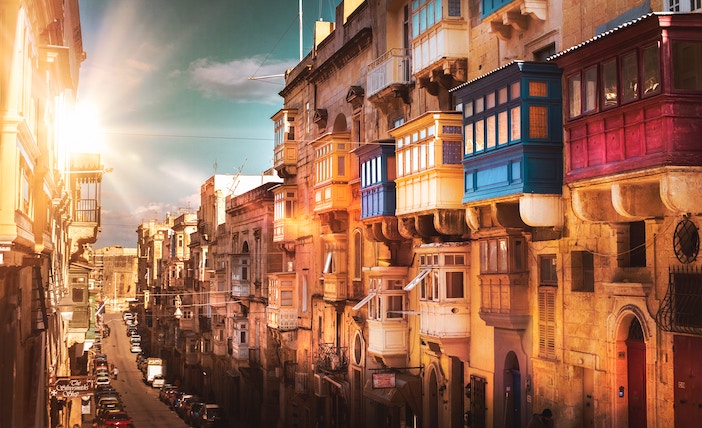
Valletta street (photo by Zoltan Tasi courtesy of Unsplash)
Valletta was once described as being a city built by gentlemen, for gentlemen. But today, everyone can enjoy all that the capital city offers. And for such a small place, it’s bursting with culture and history. Think of a noisy, bustling Italian city with fewer scooters and British remnants like red phone boxes and post boxes, add churches and cathedrals to the mix, and you have Malta.
Appropriately, my base for my whistlestop visit is the sublime Gomerino Hotel, a former palace, given a contemporary spin in its comfortable rooms. It also came in handy that I was located on the top floor and about a twenty-second walk from the rooftop pool and bar, with scenic views of Valletta. To add to my delight, right opposite the hotel was the Valletta food market, with its colourful array of stalls and pick of worldly cuisines.
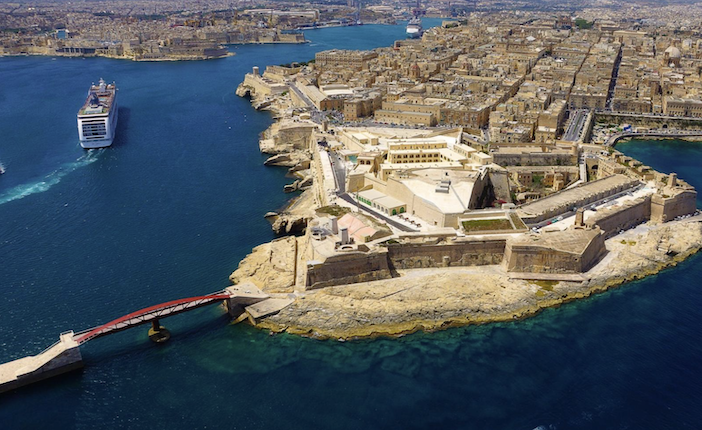
With the sun blazing against my increasingly pale skin, I begin my tour of the island in earnest with a visit to Fort St. Elmo, which has been the scene of many battles throughout the centuries protecting its borders, dating back to the attempted Ottoman invasion against the Knights in 1565, right up to the Second World War. Jump forward to the present day, the fort will host contemporary works of art in its many rooms and the large outdoor space as part of the forthcoming Biennale.
From here, it’s a short walk to the Tal-Pilar Church, a small but opulent place of worship adorned with beautiful Baroque architecture and a setting that’s befitting of works of art. If Malta’s history and ecclesiastical heritage is a hint of the art to come, the Biennale should prove an arresting event.
Appropriately enough, then, I couldn’t miss a visit to the Grandmaster’s Palace. A place fit for a king, or in this case, a Grandmaster, as many have resided here throughout the centuries in this opulent building. There are many paintings, armouries, weaponry and large halls to look at and admire, all while taking in its long history.
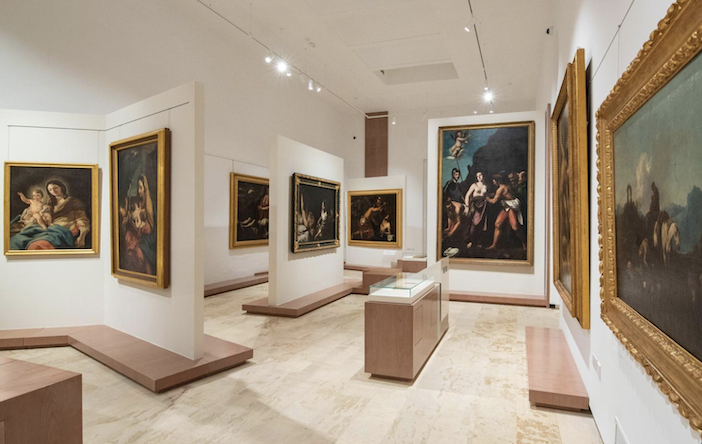
After a morning of some of Valletta’s highlights, lunch had a similarly cultural theme at MUZA, the Malta National Community Art Museum, with the head curators of the Biennale to talk about the project, preparing for the event and what to look forward to. Appropriately enough, MUZA embodies the core creative endeavour of the Biennale, and its collection is a treasure trove one can easily lose oneself in for an hour or two.
When it comes to venues, the curators are leaving no stone unturned, quite literally. Donning a headlamp, I next ventured deep underground to discover a hidden subterranean lair of Valletta of a 500-year-old labyrinth of rooms and caves, which protected the Maltese from bombs in the Second World War. Even here, the Biennale will host a space in one of its large hallways.
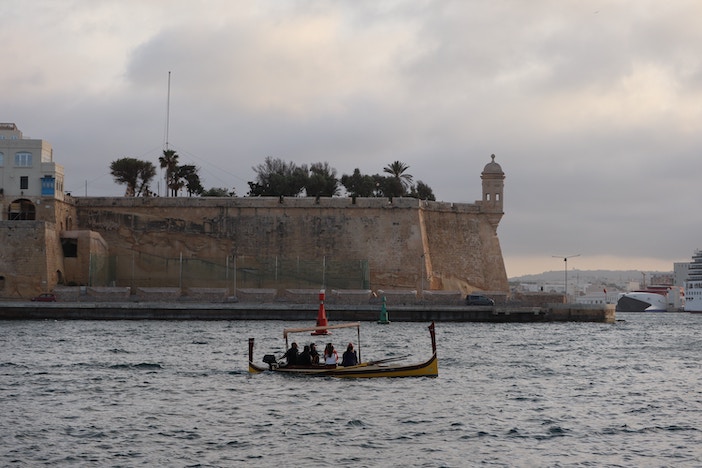
Photo by Yevheniia (courtesy of Unsplash)
The following day, it’s time to go further afield, to the Three Cities of Cottonera via the Valletta waterfront to be picked up in a dgħajsa, a boat similar to a gondola but with a motor, towards the Inquisitor’s Palace. The official residence of the Roman Catholic Church, the Inquisitor’s Palace, true to its name, held prisoners who committed religious crimes.
To wrap up my visit, I couldn’t pass up the chance to step onto Malta’s sister island, Gozo. A 45-minute ride on a fast ferry, its home to the Ggantja Temples, which are large stone structures that pre-date the Pyramids in Giza and is a UNESCO World Heritage site.
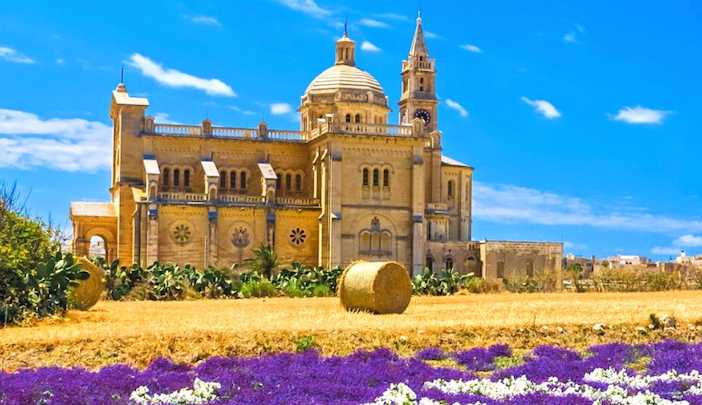
Battling through Gozo traffic, I had one final stop on my itinerary, Ta’ Pinu church. One of Malta’s most visited sites, Ta’ Pinu’s history dates back to 1883, when a peasant working in the fields heard the voice of Mary calling to her from a painting of the Assumption inside a tiny chapel. As a popular pilgrimage site its visitors soon overwhelmed the tiny chapel, so a larger church was built around it, in which now sits behind the altar, and still contains the famous painting, among countless mosaics and sculptures. It promises to be a great place where the spiritual sanctuary meets the contemporary with the forthcoming Biennale.
Malta is, in many ways, an open-air museum with many of its historical sites close to one another. How fitting, then, is it to see a contemporary art event that will no doubt fit like a glove for 2024.
The Malta Biennale runs from March-May 2024. For more information, please visit www.maltabiennale.art. For more information about Malta, and to start planning your trip, visit the official Malta Tourism website at www.visitmalta.com.
Additional photos courtesy of Malta Tourism

